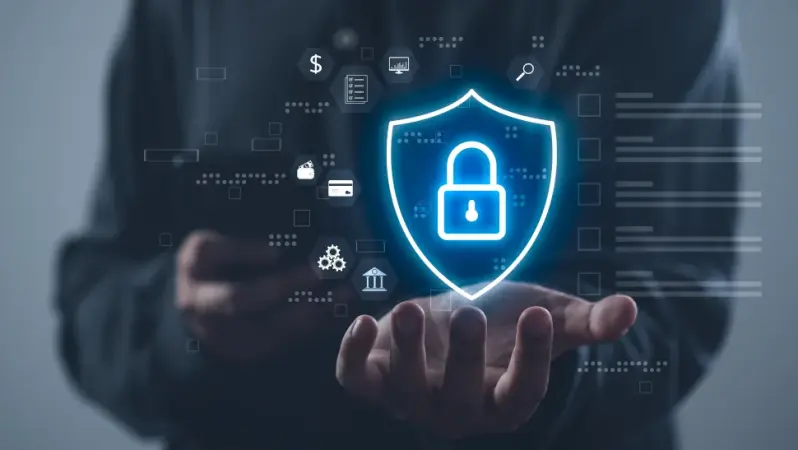Deepfake Cyberattacks: Why Human Detection Is No Longer Enough in the Age of AI
Glitchy video. Typo-ridden messages. Robotic voices. Unnatural tone.
These were once the obvious red flags of deepfake cyberattacks. But today, the signs are far less detectable—and in many cases, invisible to the human eye and ear.
As deepfake technology powered by generative AI becomes more sophisticated, organizations can no longer rely on human intuition or traditional cybersecurity training to identify malicious content. Despite this, many security protocols still depend heavily on human judgment—such as spotting phishing emails or verifying identities via video calls. This outdated approach leaves companies increasingly vulnerable to cyber threats that evolve faster than their defenses.
The Rise of AI-Driven Cyber Threats
Deepfake scams are no longer theoretical—they’re real, damaging, and growing in both volume and complexity. A recent example is global engineering giant Arup, which lost £20 million after an employee was deceived by a series of convincing AI-generated video calls impersonating senior executives.
Arup’s CIO, Rob Greig, explained:
"Like many businesses, we face constant threats—invoice fraud, phishing scams, voice spoofing, and deepfakes. The number and sophistication of these attacks have risen sharply in recent months."
This case illustrates two critical shifts in today’s cybersecurity threat landscape:
The scale of cyberattacks is increasing rapidly.
AI is making them far more sophisticated and difficult to detect.
Survey: Businesses Are Worried—But Not Ready
A recent survey from iProov shows that 70% of tech leaders believe AI-generated cyber threats will significantly affect their organizations. Yet 62% admit their businesses may not be taking the threat seriously enough.
The gap between concern and action is becoming a dangerous liability.
How AI Is Powering a New Wave of Cybercrime
AI-Enhanced Phishing Attacks
Phishing remains the most common cyberattack, involved in 36% of breaches according to Verizon’s 2023 Data Breach Investigations Report. While companies train staff to detect phishing by spotting grammatical errors or odd formatting, AI-generated emails eliminate those clues. Tools like WormGPT—a malicious alternative to ChatGPT—enable attackers to send flawless, highly personalized messages at scale and in multiple languages.
Spear-phishing—a targeted form of phishing—is now even more effective when combined with AI-generated voice notes or deepfake video calls. Just like the Arup incident, these advanced scams can easily bypass human skepticism.
Additionally, the rise of Crime-as-a-Service platforms has lowered the barrier to entry, allowing even non-technical criminals to launch sophisticated attacks using generative AI.
Remote Onboarding Under Attack
Identity verification during onboarding has become a prime target for AI-powered fraud. As more companies hire remotely, they rely on online identity checks—which are now vulnerable to manipulation by deepfakes and stolen data.
Cybersecurity firm KnowBe4 recently fell victim to such a breach, unknowingly hiring a North Korean hacker who used AI tools and fake documents. The imposter attempted to upload malware shortly after gaining access.
CEO Stu Sjouwerman warned:
“If it can happen to us, it can happen to almost anyone. Don’t let it happen to you.”
Humans Can’t Beat Deepfakes—But AI Can
The alarming truth: humans are ill-equipped to detect deepfakes in real-world situations.
In a recent iProov study, only 0.1% of participants could reliably identify AI-generated content. Yet, more than 60% were confident in their abilities—a dangerous combination of low accuracy and high overconfidence.
That’s why leading enterprises are shifting their focus from human detection to AI-powered defenses.
AI-Powered Biometric Verification Is the Future
Tech leaders are turning to facial biometric systems with liveness detection to stop deepfake attackers in their tracks. These tools don’t just confirm if the person on camera matches an ID—they determine if the individual is alive and real, not a synthetic replica or stolen image.
Key features to look for in a robust biometric identity verification system:
Adaptive AI that evolves in real-time to counter new deepfake threats
Unique challenge-response protocols that make each authentication one-of-a-kind
Dedicated security operations centers for continuous threat monitoring and rapid response
Final Thoughts: Cybersecurity Must Catch Up to AI
Traditional security training and manual review processes are no match for modern deepfakes. As AI threats accelerate, organizations must modernize their defense strategies—or risk being left dangerously exposed.
The message is clear: don’t rely on humans to detect AI attacks—use AI to stop them.
To future-proof your cybersecurity posture, it’s time to embrace advanced solutions like AI-driven biometric verification and intelligent threat monitoring. Because in today’s digital world, the difference between security and compromise is often just one deepfake away.

